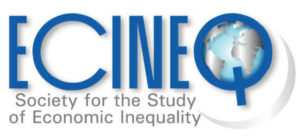Poverty Convergence Clubs
Working Paper 2022-619
Abstract
Global eradication of extreme poverty requires absolute convergence of poverty rates worldwide towards zero. Using data for more than a hundred developing countries over 35 years, we conclude that such goal is likely to remain elusive. Rather than absolute convergence, we find club convergence: countries’ long-run poverty rates cluster into three or four convergence clubs, depending on the specific poverty measure considered. The club-based country classification that results is different from standard classifications based on per capita income. The lowest-poverty club has seen a steady poverty decline, to levels close to zero by the end of the sample period. The intermediate-poverty club(s) exhibit the largest poverty reduction, especially fast since the mid-1990s. In turn, the highest-poverty club, whose member countries comprise almost half the world’s poor in the final year of the sample, evokes a poverty trap: it has seen little change in average poverty over the entire sample period. We find that income plays a bigger role than inequality for club membership, and income growth matters more than initial income; in contrast, initial inequality plays a bigger role than its changes over time. High initial income and low initial inequality almost invariably drive countries into the lowest-poverty club, while weak growth and low initial income are the key drivers of membership in the highest-poverty club. Inequality plays a more substantive role for membership in intermediate-poverty clubs.
Authors: Gustavo A. Marrero, Angel S. Marrero-Llinares, Luis Servén.
